For film photographers, buying a roll of film can be a deeply personal decision. Everyone has their own preferences for the film that fills their hearts with joy, and it’s not always easy to pick it out.
Film-speak is almost its own language. And for non-film enthusiasts, deciphering the cryptic messages about what films make a specific photographer tick can be difficult at the best of times. So in this guide, I’m going to give you a simple breakdown of what films are safe to purchase for the film enthusiast in your life, and which ones will require a bit of extra investigation. To start, what are the most popular films that photographers shoot?
The most popular film stocks are Kodak Portra 400 for color, and Kodak Tri-X for black and white. These two film stocks make up the majority of film sales in North America and Europe. They are professional-quality films that have wide appeal and use in almost every scenario.
There are some people who believe that Portra is overrated, but even those photographers will be able to get good use out of this generalist, professional-quality film. It’s been a staple for photographers ever since its release because of how well it handles skin tones, and how beautiful it looks at sunset, or over-exposed in the daytime.
Tri-X is another fan favorite. This black and white film has been the film of choice for professionals, street photographers, and journalists since its release back in the 40s. The film has changed dramatically since then, but it still retains the qualities that made it appealing to photographers all over the world.
Have a specific question? These links will take you to different parts of the article:
What films should I avoid purchasing as a gift? | What gifts other than film should I give a photographer? | How do I know what film they need? | Additions that’ll save money | How to know what kind of instant film to purchase | A massive chart of film stocks and who they’re for
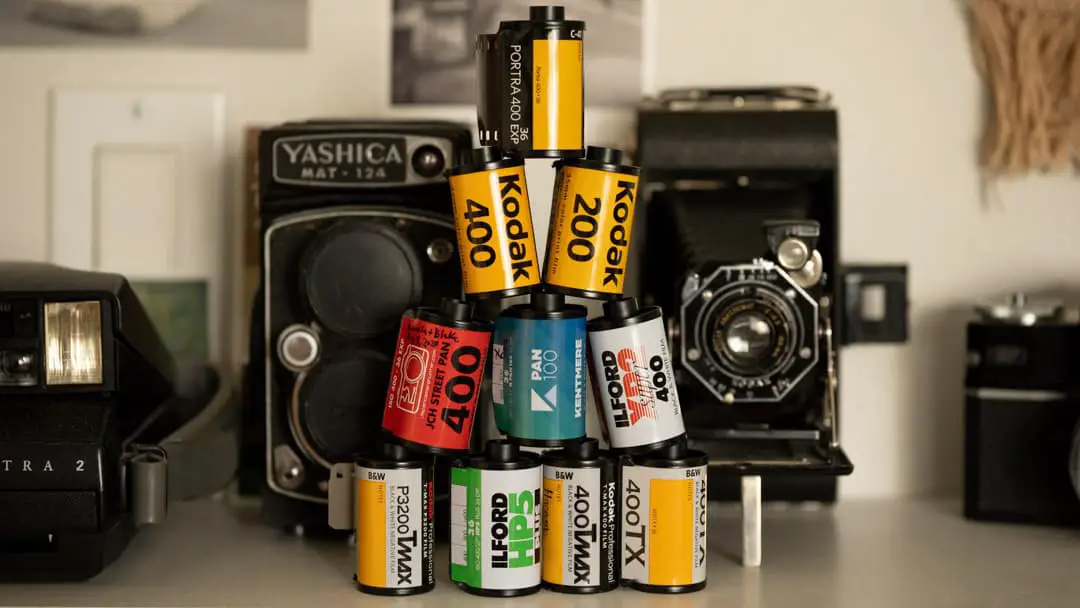
How do you discover a photographer’s film preference?
There is still a surprising amount of variation in the amount of film stocks that are available to photographers these days. And that means that every photographer will have their own preference for the type of film that they’re shooting. So what’s the best way to dig deeper and find out what film the photographer in your life would love to receive as a gift?
The easiest place to find a film photographer’s preference is on their Instagram accounts. Many photographers mention the film stock they used to create the image, or the post may show frame borders with the name of the film on it.
If you can’t find their Instagram account, there will be other ways to find out which type of film is best to get. And there are a couple of safe choices that almost every photographer will love or have use for.
But in general, I would not recommend getting recommendations at the camera store. Most staff working at camera stores only shoot digital photography these days. And even if they do shoot film, they will likely make recommendations for films that the photographer in your life would never shoot themselves.
What films should I avoid purchasing as a gift?
There are a few films that should probably be avoided if you’re purchasing film for another photographer. I just want to say that all the films on this list are fantastic films that will be perfect in some photographer’s kit. The only reason I put them on the avoid list is because these films are specially suited for a specific niche.
That said, if you find evidence, or hear about these films in passing from the photographer who you’re looking to make a purchase for, by all means, get them more of these films. I would personally be happy to receive most of the films on this list.
- Kodak TMax films
- Kodak Ektar
- Kodak Ektachrome
- Fuji Acros II
- Fuji Velvia films
- Fuji Provia
- Ilford SFX 200
- Ilford Delta
- Ilford Ortho
- Kentmere films
- Lomo 400
- Lomo 800
- Lomo 100
- Bergger Pancro 400
Again, none of these are bad films. In fact, Ilford Delta and Kodak TMax are even labelled as professional films because they have incredible grain structures and sharpness. Kodak Ektar is another professional color film that many landscape photographers absolutely adore. But the reason they’re on this list is because they’re not for everyone.
How do I know what type of film a photographer needs?
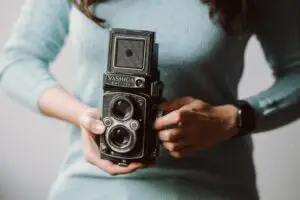
The next important factor to consider is what kind of camera the person you’re buying a gift for has. If you buy film in the wrong format, it’s likely to just sit on their shelf unused (unless you give them a gift receipt). The easiest way to know for sure is to ask — but if you’re reading this article, chances are that’s not an option. Here’s what you can do to find the right film to give that photographer.
The easiest way to know is to look at the camera. If it’s a gigantic block that weighs more than 5 pounds, chances are it will take 120 film. If the camera is thinner, lighter, and has smaller lenses, it’ll be a 35mm camera.
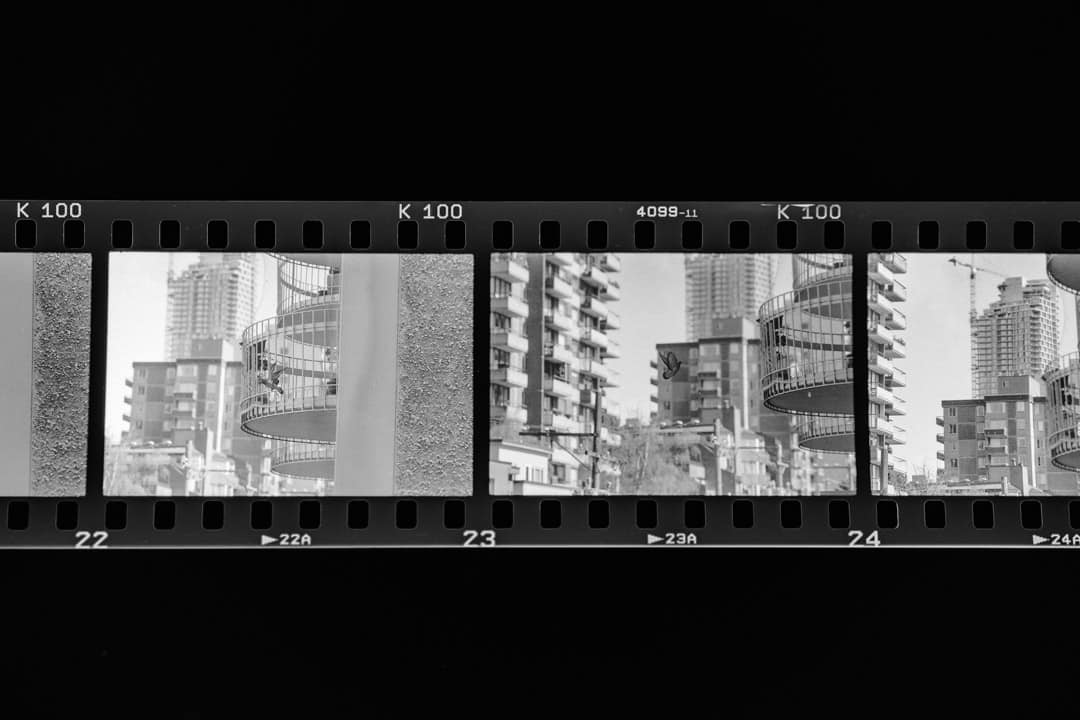
Another dead giveaway is if you’ve seen the photographer load the film. A 35mm camera will have film that comes in a small metal canister and has sprocket holes on the top and bottom of the plastic film base. Medium format camera that uses 120 film will have rolls that are 6.5 inches long and have paper around them that the photographer has to unravel and wrap around a spool.
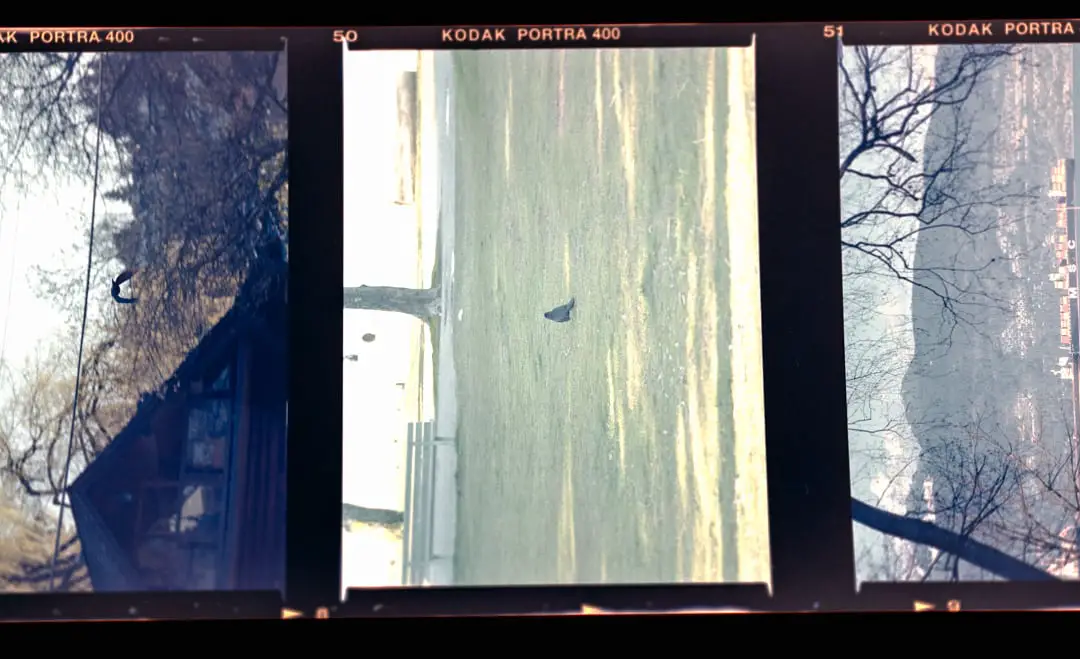
The next way to tell is again to look at their Instagram account. Many Photographers post images of their cameras, or write out the name of the camera they use in the description of the image. If they don’t, then you can again look for images that show the film frames. 35mm film will have perforations, or holes, on the top and bottom of the frame. 120 film, or medium format does not have those perforations found in 35mm films and is usually shot in square or larger rectangular frames. 120 films will also have triangles along the borders, and frame numbers that only go up to 17. If there’s a number higher than 17, it’s a dead giveaway that the film is 35mm.
With this in mind, it should be fairly simple to know which film to purchase.
Do they normally shoot in color or black and white?
The type of film photographers shoot can be very personal. Many photographers love black and white because of the freedom that film gives them to develop at home and to create their own looks. Others love color because it gives a look and feel that digital has yet to emulate perfectly.
The benefit of black and white film over color stocks is that it’s easier to develop and print at home. That means photographers can push and pull without paying any extra cost, and can control the look and feel of the final product. Photographers also shoot B&W much differently than color film, as they have to rely on lighting contrast to make the images stand out.
That said, many photographers — especially those who are newer to photography — prefer using color films because they’re more forgiving, and typically more fun to shoot.
Look at their past work. If you see that they dabble in B&W only every now and then, stick to giving them color films as a gift. If they only ever shoot B&W, then don’t buy color, as it’ll likely stay on the shelf much longer than it should.

What kind of photography do they do?
There are some film stocks that are mainstays in the industry. For example, Kodak Portra for color, or Kodak Tri-X for black and white are useful in many different circumstances. They’re loved by almost everyone for their versatility, tonality, and colors (at least, for Portra).
But there are some films that are designed for certain niche situations. For example, Kodak Ektar is a professional color film, but most photographers prefer this film for landscapes because it’s just a little too punchy for portraits.
As well, it’s important to note that many photographers stay away from Kodak Tmax and Ilford Delta films. Even though those black and white films are labelled “professional” on the box, the look they create is not for everyone.
If you’d like to learn more, I’ve written a handy, large chart on the most popular films in order at the bottom of this page. Click this link to scroll there now.
Save your photographer money with prepaid lab developing
Have you ever heard the photographer in your family talk about how they develop film? Did they start developing it themselves, or do they complain about how much it costs to develop at the lab?
If they’re a photographer who prefers using a lab to develop and scan their film, then there are some options you can use to help save them money. Many local film labs offer film with prepaid developing services. This is great for both the client and the lab, because it guarantees they get more business while the client gets a discount on the developing costs.
For many photographers, this is a great deal. Because developing, scanning, and printing film images can cost twice as much as the roll itself.
But if your gift receiver develops film themselves, then this may not be the best option. For myself, I personally love the quality and control that I have over the film when developing black and white film at home. Labs are convenient, but they don’t always give me the look that I want.
So if the photographer in your life prefers to develop at home, the prepaid developing service might be a waste of money, where another roll of film could work better.
How to find the right instant film for the photographer in your family?
Instant film is the trickiest medium to purchase for a family member. That’s because there are many different types of instant cameras, and, frustratingly, they all take different types of film.
So how do you know which type of film to buy an instant photographer?
The easiest way to know what type of film to buy an instant photographer is simply to ask what type of film they need. If you aren’t able to ask, or want to keep it a surprise, you can measure the size of an instant photo they have given to you (especially for Fuji Instax), or look through their social media presence to see if they’ve posted about their instant photographs.
That said, even measuring the instant photos can lead to some confusion. For example, Polaroid SX-70 and 600 Series, and i-Type cameras all use the same size of film, however, the packs are not all compatible between cameras. i-Type and 600 Series cameras can both use 600 series film, but only i-Type can use i-Type film, and only the SX-70 can use SX-70 film.
However, there can be one other giveaway that the photographer is using an SX-70. And that’s that the SX-70 cameras are capable of producing focus blur, or bokeh in the backgrounds, where the other Polaroid cameras are not able to.
The next way to find out covertly is to look in the descriptions of images on their Instagram accounts. Many photographers mention the camera they’re using in the image descriptions. If you can find that information, you’ll know exactly what film to purchase.
Failing that, give them a gift card for the online Polaroid store. Prices directly from Polaroid are often cheaper than in store — especially when purchasing in bulk.
A massive chart of films ranked by popularity and purpose
For those who want to learn a little bit more about the different kinds of film and their purpose, here’s a massive list of almost every film that’s currently available from the big four manufacturers. The films on this list are ordered by manufacturer, and then by popularity. The films at the top of the sections are the most popular, and the ones at bottom are the least popular.
These rankings are based on my own years of experience shooting, developing, printing, and being active in the film photography communities on Facebook, blogs, and forums.
| Film Stock | Film Stock Popularity | Color or B&W | Film Purpose |
|---|---|---|---|
| Kodak | Most popular manufacturer | Both | The world’s longest-running film manufacturer. Their lines target professionals and beginner film photographers. |
| Portra 400 | Most popular | Color | Generalist professional color film |
| Tri-X | Most Popular | B&W | Generalist B&W film |
| Kodak Ultramax | Popular | Color | Consumer generalist film |
| Portra 160/800 | Popular | Color | Not as popular as Portra 400 |
| Gold | Somewhat popular | Color | Consumer daylight film |
| Colorplus | Somewhat popular | Color | Consumer daylight film |
| Ektachrome | Somewhat popular | Color positive film | Professional color reversal film |
| Ektar | Not Popular | Color | Professional Landscape film |
| Tmax 100/400/3200 | Not popular | B&W | Professional, fine-grain B&W film |
| Ilford | Most popular B&W manufacturer | B&W only | Professional films targetted for all photographers |
| HP5+ | Most popular | B&W | Everyday film, like Tri-X |
| XP2 | Most popular | B&W | Generalist B&W, can be developed at any lab |
| FP4 | Popular | B&W | Fine-grain, portraits, daylight, landscapes |
| Delta 3200 | Somewhat popular | B&W | Low-light film stock |
| Ilford Pan F | Somewhat popular | B&W | Ultra fine-grain film |
| Ilford Ortho 80 | Somewhat popular | B&W | New film, great for portraits |
| Delta 100/400 | Not popular | B&W | Professional, fine-grain B&W |
| SFX 200 | Not Popular | B&W | Infrared landscape film |
| Kentmere 100/400 | Not popular | B&W | Budget film lineup, still cool, but not as cool as HP5+ |
| Fuji | Generalist color film manufacturer | Both | A film manufacturer that designs films to capture images in the most true-to-life fashion |
| Velvia 50/100 | Somewhat popular | Color Reversal | Professional color reversal film |
| Superia 400 | Somewhat popular | Color | Generalist consumer color film |
| Acros II | Somewhat popular | B&W | Professional B&W film |
| C200 | Somewhat popular | Color | Generalist consumer daylight color film |
| Provia | Somewhat popular | Color Reversal | More saturated than Velvia |
| Lomography | Experimental film manufacturer | Both | Dedicated to keeping film alive and fun. |
| Berlin Kino | Popular | B&W | High contrast B&W film |
| Potsdam Kino | Popular | B&W | Lower contrast than Berlin |
| Lomochrome Purple | Somewhat Popular | Color | An experimental film that turns green hues purple. |
| Lomochrome Metropolis | Somewhat popular | Color | Experimental desaturated color film |
| Fantome/Babylon | Somewhat popular | B&W | Extreme low sensitivity B&W for long exposures |
| Lomo 100/400/800 | Somewhat popular | Color | Standard color film stocks |
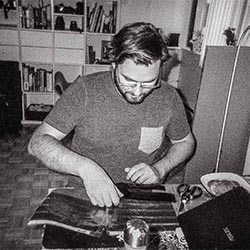
About the author of Learn Film Photography
Daren is a journalist and wedding photographer based in Vancouver, B.C. He’s been taking personal and professional photos on film since 2017 and began developing and printing his own photos after wanting more control than what local labs could offer.

